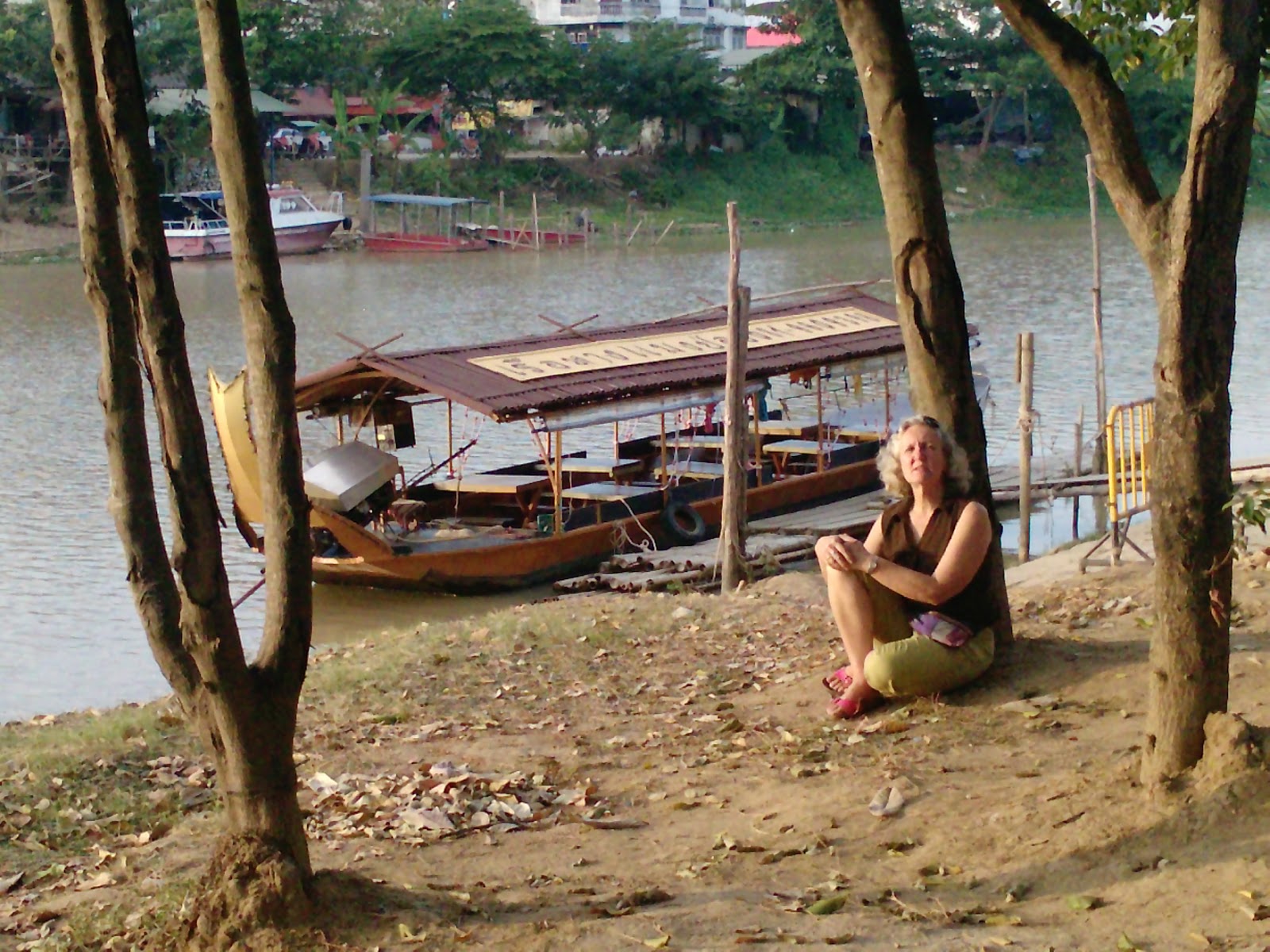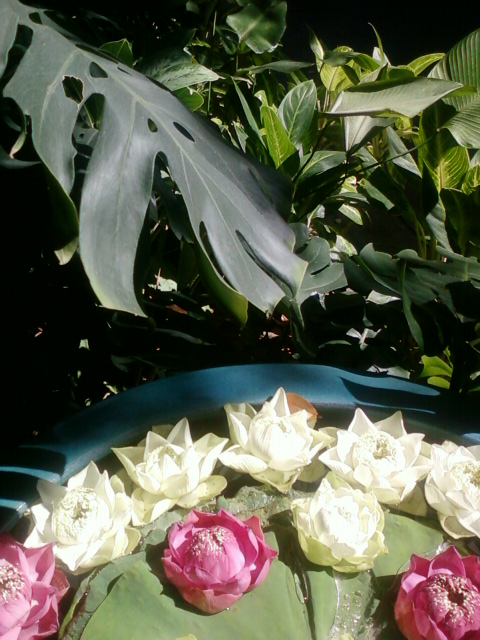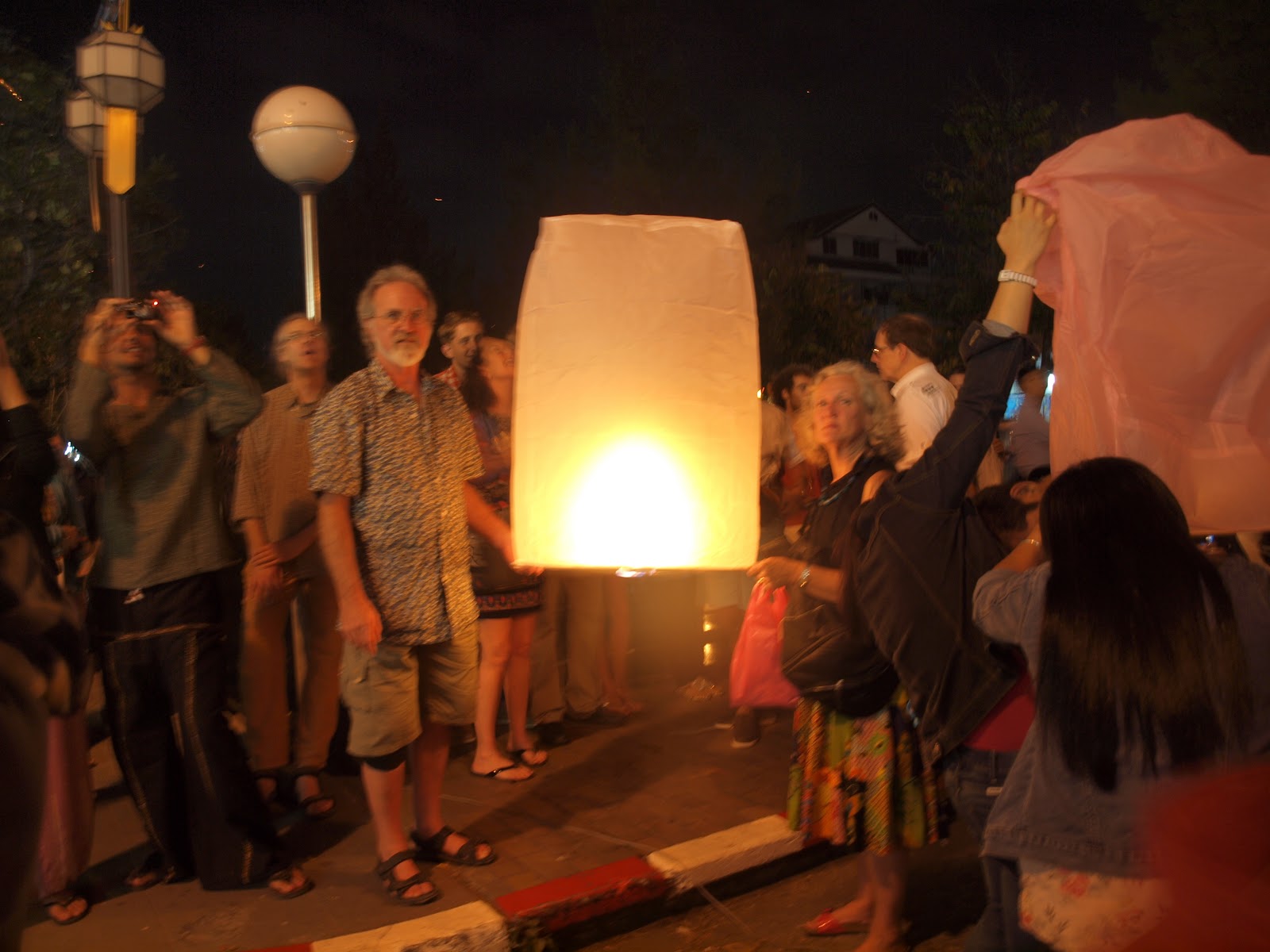The image of a cleansing rain is shattered in Cairo. When rain is infrequent sand coats the vegetation and buildings. The infrequent showers of rain dislodge this coating, covering everything with a layer of sludge. If there is a significant amount of precipition a slurry of wet sand develops on the ground and roads interpersed with puddles, since there is no drainage. Alas, it dries up quickly and we return to the normal sandy streets and broken sidewalks.
It was a wonderful contrast to be in Thailand, where rain is usually a blessing that bestows the thick, rich vegetation of the jungles and sometimes a curse, in the time of the monsoons when floods are not uncommom. The rich greenery, including many varieities of bamboo was a welcome relief from the desert landscape of Egypt.
In the Middle East the impact of Islam is evident in the clothing, the call for prayer from the loud speakers five times a day and the placement of mosques on every streets. In Cairo most Muslim woman wear the veil, some are totally covered with the burqua. The mosques are a place for worship only, generally only for the men. Cultural infuences and the impact of a dusty landscape generally make Cairo a place of little color. In contrast the most striking impression in South East Asia is one of wondrous color.
The flowers were glorious, with floral offerings in every temple as well as with the "little houses". Here you will see the flowers woven into garlands.
There was a vast range of orchids in a rainbow of colors. I had no idea that orchids grew in the jungles on the trees with their roots hanging down.
Lotus flowers, here as a decorative element, are a common offering as people entered the temples to worship for special festivals.
I would never have imagined taxis in brilliant pinks - and yellow and ... as seen in the traffic of Bangkok
 The waterways including rivers and canals have a major role in providing transportation. Traditional boats including scorpion boats, which are said to have been made in the shape of a scorpion perched on a floating log. We learned much about the history of Northern Thailand on the river Ping in the Sciorpion boat.
The waterways including rivers and canals have a major role in providing transportation. Traditional boats including scorpion boats, which are said to have been made in the shape of a scorpion perched on a floating log. We learned much about the history of Northern Thailand on the river Ping in the Sciorpion boat. 
We learned much about the amazing range and value of jungle plants, for food food and medical purposes in our visit to a private botanical garden. Evidently there are plants in the National forest near his farm which have yet to be classified. We tasted many leaves etc. We were given a sour fruit to taste (soursop), then a fruit he called a miracle fruit, and then the soursop again. The second fruit affected the receptors in our tongue so that the first fruit now tasted sweet. Wouldn't that be a handy way of getting children to try vegetables they didn't like the taste of.

The climate yields lush vegetation in the natural habitait in both Thailand and Vietnam encouraging a wide range of cultivatied plants in pots and gardens incuding bonsai and topiary.
Color and lights in the sky were an added benefit as we enjoyed the New Year in Chang Mai.



















